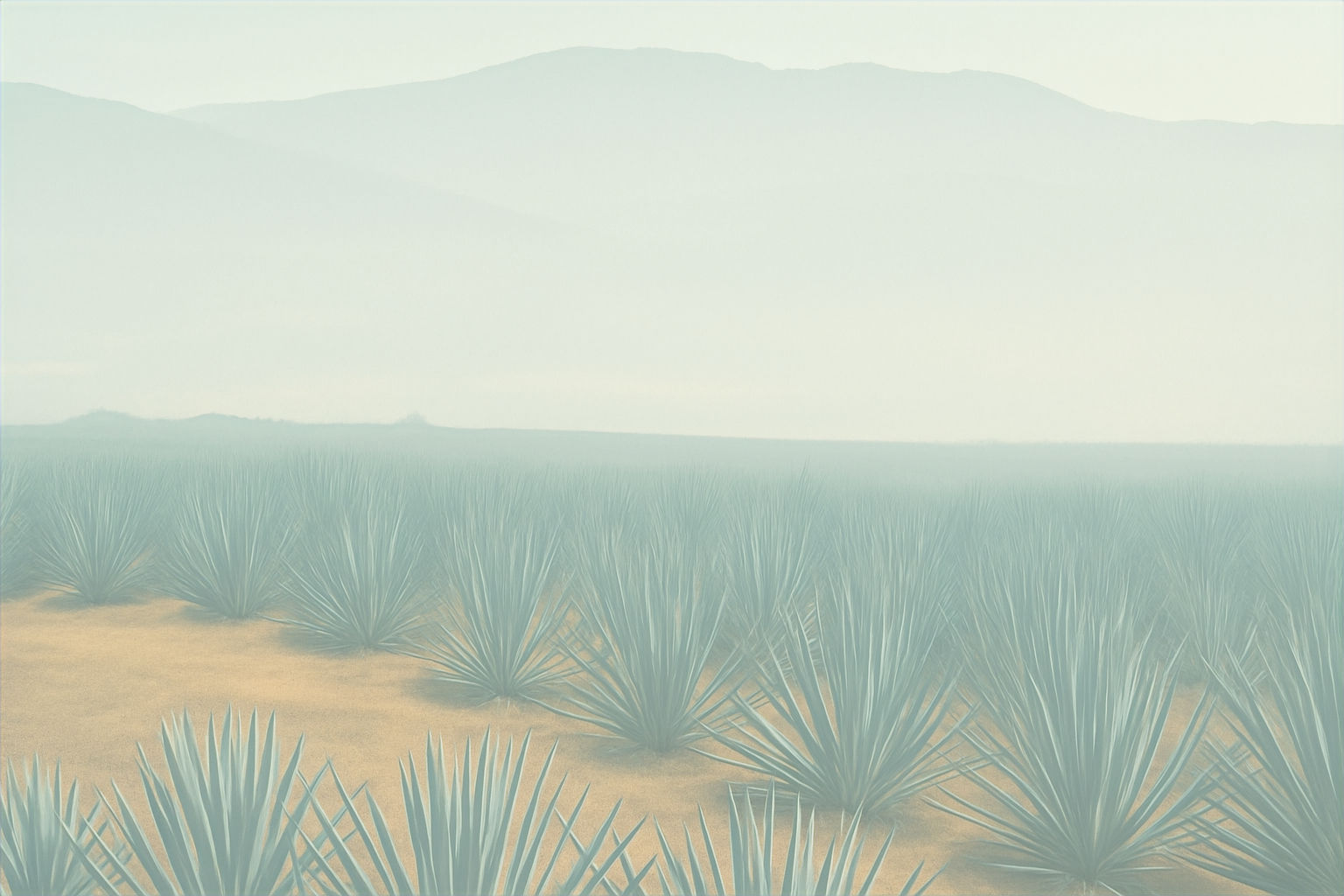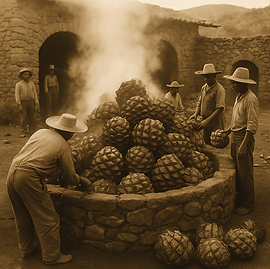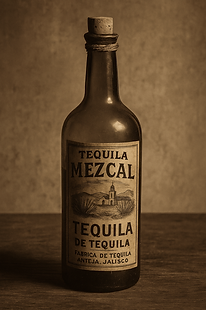
Roots of Tequila and Agave
Long before tequila as we know it existed, agave was already an essential part of the daily life of the indigenous peoples of Mesoamerica.
It was used to obtain fibers, roofs, utensils, and even fermented foods and beverages, such as pulque. This ancestral relationship with agave was not only utilitarian; it was also laden with spiritual symbolism and respect for the land.
Over the centuries, the agave plant has become a sacred plant, a source of life, sustenance, and ritual. The roots of tequila are, in fact, the roots of Mexico itself.
The Agave: Heritage of Fire and Earth
From the first glimmerings of the Mesoamerican dawn, the agave was not just a plant: it was a symbol of life, resilience, and connection to the earth. Its sharp leaves, pointing to the sky as if seeking the sun's secrets, provided roofs for homes and fibers for textiles. Its heart, baked in stone ovens, nourished not only the body but also the soul of a people who saw it as a gift from the gods.
Tequila, born centuries later, is not a simple drink: it is a liquid heritage. Each drop contains the memory of civilizations, the passion of generations of farmers, and the art of masters who have perfected fire and fermentation. Understanding its history is like traveling back in time, to the very roots of Mexico.
From Aguardiente to Tequila: The Name of a People, the Spirit of a Nation
The word "tequila" wasn't born in a factory, but in the earth. It comes from the Nahuatl Tequillan or Tecuilan, which can be translated as "place of tribute" or "place of work." It was the name of the town of Jalisco that, over time, would give rise to the country's most representative drink.
During the colonial era, the Spanish introduced the still, and with it, distillation. Agave mezcals began to evolve, and in the Tequila region of Jalisco, a particular, more refined, and more defined distillate emerged: what we know today as tequila.
At that moment, aguardiente ceased to be generic and became a symbol of geography, culture, and belonging. Tequila took the name of the town, but it also became its soul. And even more: it became Mexican.
Between Revolutions and Smuggling: Tequila Crosses Borders
While bullets whizzed through the Revolution and the bars burned with song and gunpowder, tequila kept flowing. It accompanied soldiers, soothed pain, and sealed pacts under dusty skies. It was a drink of resistance, but also of identity.
Across the Rio Grande, the United States prohibited alcohol. It was then that tequila crossed the border in the hands of brave and opportunistic smugglers. From the dusty towns of Jalisco to the clandestine parties of Chicago, the spirit found its way into modified cars, tunnels, and even disguised bottles.
Thus was born a legend: tequila as the first Mexican distillate to become internationally contraband. It not only flouted laws, it defied prejudices. From being seen as a harsh drink, it went on to enchant foreign palates and open doors to the world.
Where others saw a commodity, Mexico saw bottled history.
Tequila was no longer just a drink: it was an act of rebellion, a voice saying, “Here we are.”
Denomination of Origin: Tequila Defends its Name
When tequila began conquering palates around the world, a crucial question arose: how to protect its essence, its origin, its soul? In 1974, Mexico responded forcefully: the Tequila Designation of Origin was born, a declaration to the world that this beverage was not just a product, but a heritage.
Not just any place can make tequila. Only certain regions—like Jalisco, and parts of Nayarit, Michoacán, Guanajuato, and Tamaulipas—share the soil, climate, and ancestral knowledge to make it authentic. With this, Mexico drew a symbolic boundary: true tequila is born here.
The Denomination of Origin doesn't just protect a name; it protects a history. It defends the farmers, the jimadores, the families who have cultivated agave for generations. It's a shield against oblivion, and a symbol of identity.
Today, every bottle that proudly bears the name “tequila” also carries centuries of tradition, legal and cultural battles, and a nation's right to say: this is ours… and we share it with the world.

Amid smoke and hot stones, agave hearts begin their ancestral transformation. This scene recreates the ovens that gave rise to Mexico’s earliest spirits, where earth, fire, and tradition have met for centuries.

An antique bottle labeled "Tequila Mezcal," as it was known back when tequila was still considered a variety of mezcal. Photograph inspired by bottles from the Porfiriato and early 20th century.


